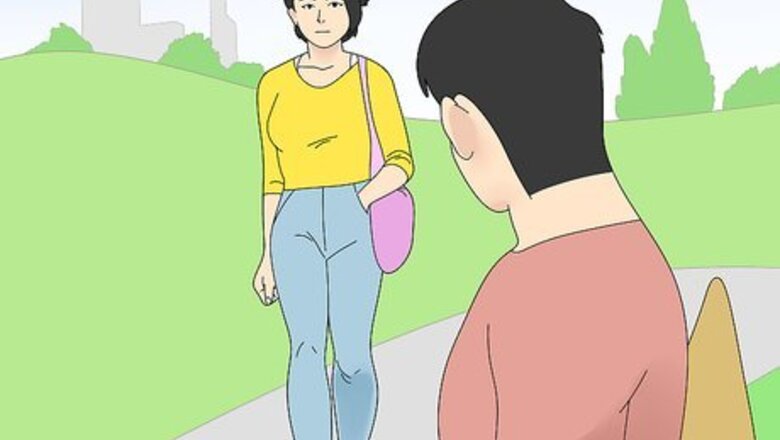
views
Making Eye Contact with a Girl
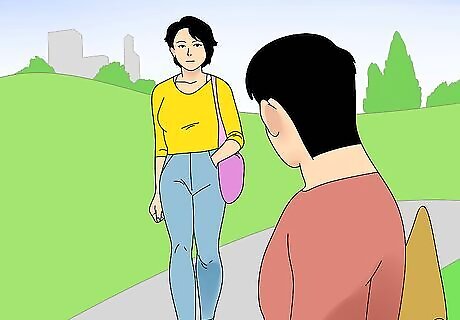
Find someone you may be interested in meeting. This can be anywhere... a book store, bar, restaurant, shopping center, etc. If you find someone at a place you visit frequently, chances are you may have something in common. Something to talk about, perhaps.
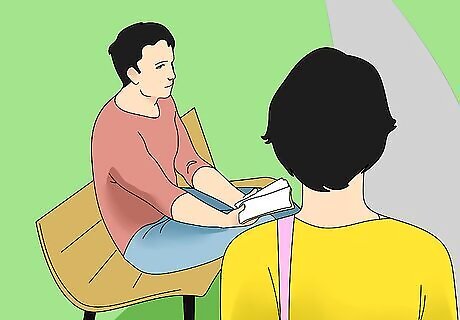
Relax. Narrow and tense eye's tend to convey a negative or angry disposition, so do your best to maintain your calm. A calm demeanor will put people at ease and make them feel more comfortable speaking with you.
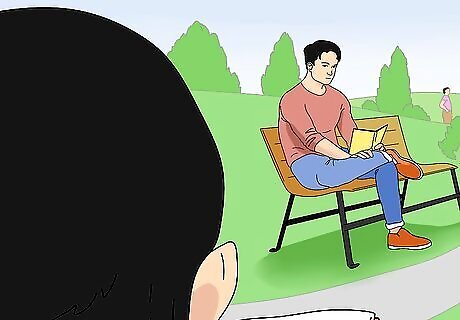
Glance casually in her direction. Every so often, gaze over at her. Does she seem to be trying to make eye contact with you?
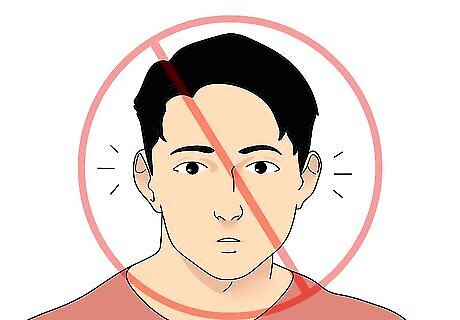
Don't stare. Staring at people is not only rude, but it also makes people feel very uncomfortable. If you don't catch her eye, she may be uninterested or preoccupied. Even worse, she may be offended that you are staring. If someone is unwilling to make eye contact with you, or seems to be avoiding it, this may be an indicator that she is not interested in speaking or meeting you.

Meet her gaze with a smile. If the two of you make eye-contact, be sure to relax and smile. Again, an easy smile will make people feel more comfortable.
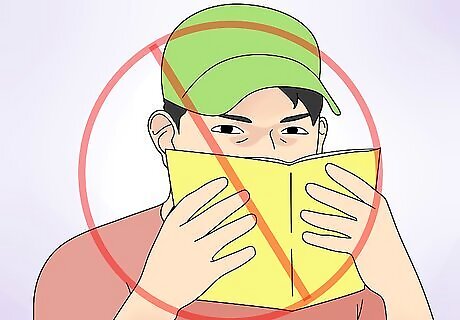
Avoid examining her. Looking intensely at a person--even when eye contact has been established--can be rude and intimidating, even demeaning.
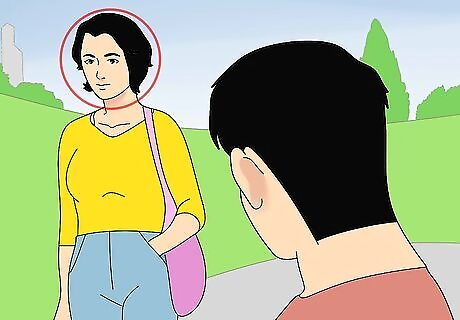
Try to read her facial expression. Although this is highly subjective and is in no way a perfect science, do your best to interpret any expression she may have made. Did she return the smile? Or, did she politely nod? A smile may be an indicator of interest, while a nod just the opposite. Blinking or batting of the eyes can also be an indicator of interest. Did she raise her eyebrows? This can be a way of saying hello or communicating further interest. Were her eyes wide open? This can be a way of communicating happiness or joy, even a feeling of ease. Did she seem to be lowering her chin, appearing to be looking up at you? This too can be a sign that she may be interested in meeting you.Tip: If she frowns or looks uncomfortable, it means she's not interested and you shouldn't force it. That doesn't automatically mean anything bad about you, though. She could be in a hurry, in a bad mood, or just not feeling friendly. Girls who aren't interested in a new relationship (whether they're of the wrong sexual orientation for you, already dating someone, or taking a break from dating) may also act aloof to avoid giving you the wrong impression. Respect her wishes and stop trying.
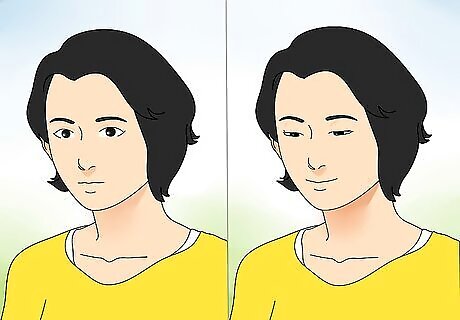
Let her be the first to break eye contact. Don't look away until she does. This will communicate that you are interested in speaking to her. Keep smiling with open body language so she knows this is a friendly look, not a threatening stare. The longer she maintains eye contact, the more likely it is that she may be interested in meeting you.

Continue to look. After she breaks eye contact with you, continue looking in her general direction for another second or two. If she looks back, make eye contact with her once again and smile. If she looks back with open body language, it may be an indicator that she is interested in meeting and/or speaking to you.
Overcoming a Fear of Eye Contact

Relax. Although it can be very intimidating to make eye contact with someone you don't know, you need to do your best to maintain a calm demeanor. Nobody likes being looked-at with nervous, intense, or over-anxious eyes. The person you may wish to make eye contact with may be nervous as well. If you maintain a calm demeanor, you might be able to make them feel more at ease. Intense or anxious stares may suggest hostility or anger--the opposite of what you are trying to convey.
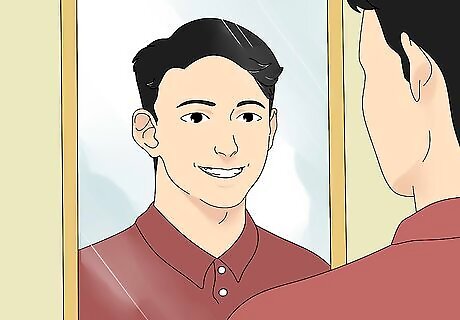
Practice your smile in the mirror. This may sound silly, but if you aren't in the practice of making eye contact with people, then you might not be in the practice of producing a gentle gaze or smile. You may not actually be "staring" at someone, but the look on your face may suggest otherwise. This can make people feel very uneasy. Being stared at makes people feel uncomfortable and will make them want to avoid eye contact. Be sure to avoid making facial expressions that would suggest you are examining or critiquing a person. Practicing your smile in the mirror will also help you get over any feeling of intimidation of shyness that you may experience when making direct eye contact.
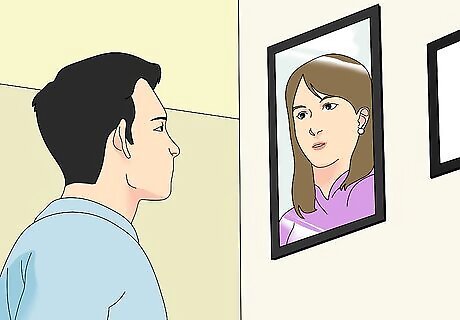
Look at portraits of people. Get used to making direct eye contact by practicing on a few portraits. This may feel awkward at first, but that is the point. You want to continue to work through any feeling of awkwardness that you may experience while looking people in the eye. You can even do this while flipping through magazines or while browsing the internet.
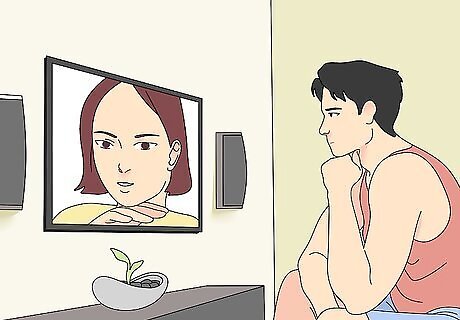
Practice making eye contact with the television. As you watch your favorite television show, practice making direct eye contact with the characters as if they are real people speaking directly to you. Follow their eyes as they move around the screen.
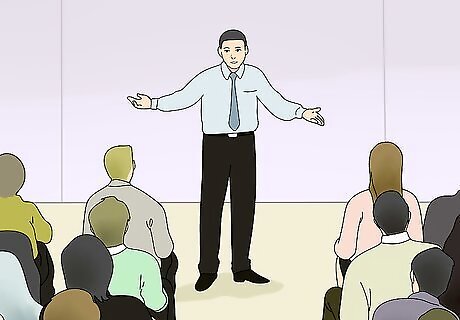
Go see a public speaker. It is a lot easier to make and maintain eye contact with an individual when you are listening instead of speaking. Furthermore, being part of a group may help alleviate any anxiety. Practice making eye contact with someone delivering a speech or public address. Even when the speaker is not looking at you directly, practice looking at their eyes. When the speaker looks in your direction, give them a supportive smile.
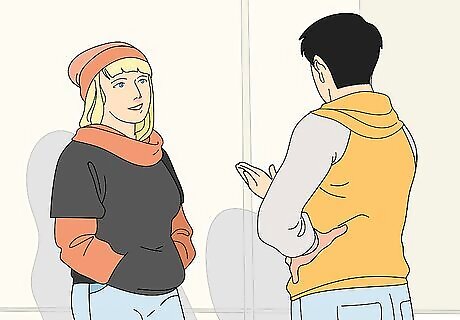
Engage in short conversations with people you don't know. Maintaining eye contact for a long period of time can be uncomfortable or difficult, so start with short conversations with the grocery clerk, your neighbor, even a co-worker. The point is not to engage in a deep or meaningful conversation, but to practice making eye contact with a real person for short periods of time. As you feel more-and-more comfortable, try increasing the length of the discussions.
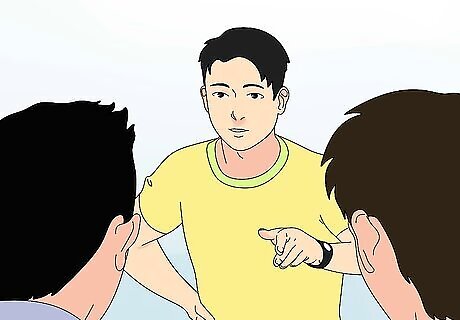
Look your friends in the eye when conversing. Practice looking your friends or people that you feel comfortable with in the eyes. Make this a priority when you are speaking to your friends and family. In some cases, it may be easier for you to look at another spot on the person's face, like their eyebrows or nose. If you pick a spot close enough to the eye they will not be able to notice that you are not looking at them directly.

Take a test or survey. If making eye contact with a person continues to be a difficult task, you may want to consider taking a preliminary test to see if you have an anxiety disorder or are neurodivergent somehow. Social anxiety disorders can be identified as an extreme and constant fear of being judged, scrutinized, or critiqued. Neurodivergent people may find eye contact distracting or overwhelming. This can be true for autistic people, people with ADHD, people with sensory processing disorder, and others. Faking it is more comfortable.


















Comments
0 comment